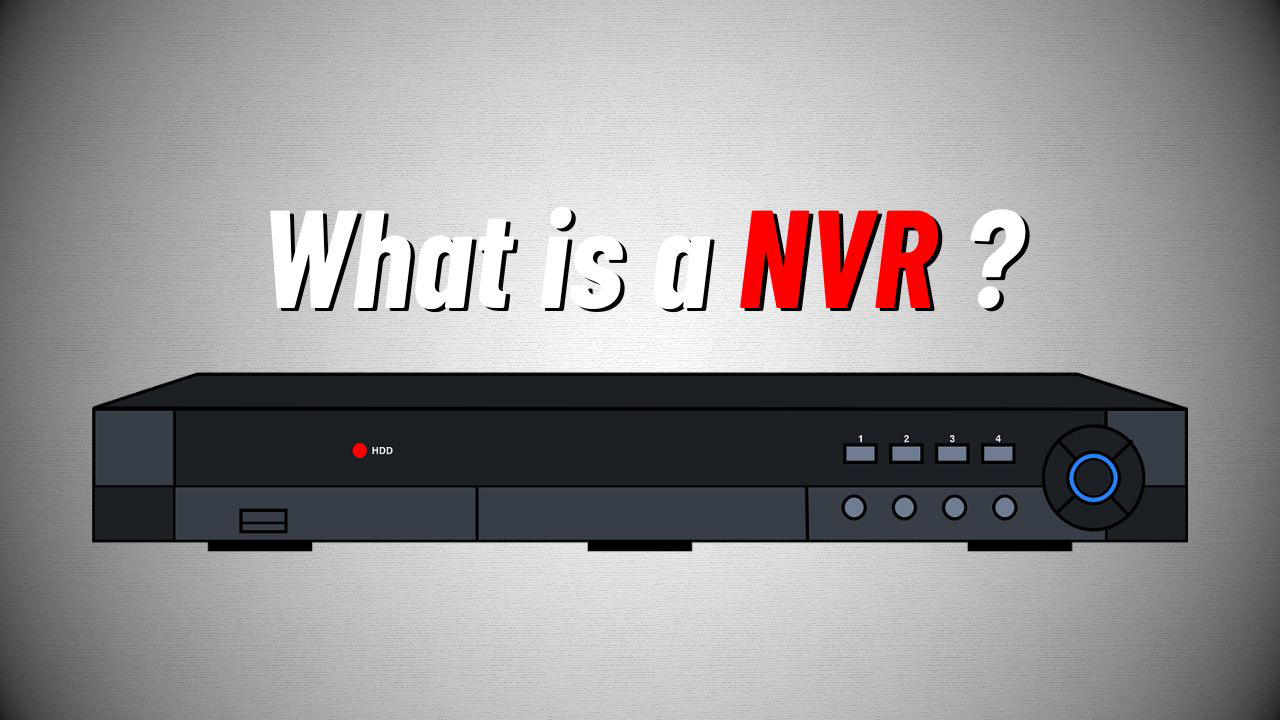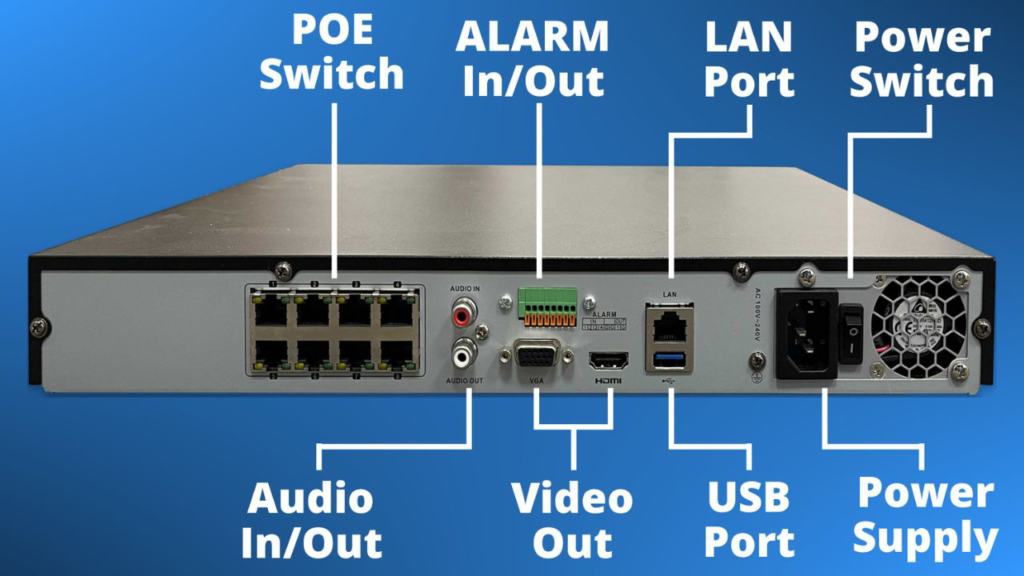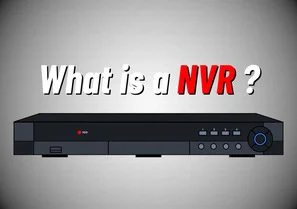In the world of video surveillance, the Network Video Recorder (NVR) has emerged as a game-changer. This specialized computer, equipped with advanced software, revolutionizes the way security footage is recorded, stored, and accessed. With superior image quality, system flexibility, and advanced features, NVRs have become the go-to solution for IP video surveillance systems.

What is a Network Video Recorder (NVR)?
A Network Video Recorder (NVR) is a dedicated device designed to record and store security video surveillance footage in digital format. Unlike its predecessor, the Digital Video Recorder (DVR), the NVR does not have built-in video capture capability. Instead, it relies on IP or CCTV cameras to process and encode the video, which is then transferred to the NVR for storage via an ethernet or WIFI network.
NVRs have gained popularity due to their ability to record video and audio simultaneously, resulting in better image quality and enhanced viewing coverage. They offer both wired and wireless connectivity options, reducing the hassle of multiple cables for video, audio, and power. Moreover, NVRs are equipped with advanced image recognition technology, allowing for the identification of faces, license plates, and other crucial details.
Key Features of Network Video Recorders (NVR)
Network Video Recorders come with a wide range of features that enhance the overall functionality and performance of video surveillance systems. Let’s take a closer look at some of these features:
Video Analytics
NVRs are equipped with advanced video analytics capabilities, enabling intelligent video processing. This feature allows for the detection of specific events or objects, such as motion detection, tampering, or intrusion. By leveraging video analytics, NVRs can automatically trigger recording and alert notifications based on predefined rules, enhancing the overall security of the surveillance system.
Recording Mode Options
NVRs offer various recording mode options to suit different surveillance needs. These modes include continuous recording, scheduled recording, motion-activated recording, and event-triggered recording. This flexibility ensures that the NVR captures and stores footage efficiently, reducing storage space requirements and facilitating easy retrieval of specific events.
Power-over-Ethernet (PoE) Network Switches
To simplify installation and reduce cable clutter, many NVRs are equipped with Power-over-Ethernet (PoE) network switches. These switches allow for the direct connection of IP cameras to the NVR using a single Ethernet cable, providing both power and data transmission. This eliminates the need for separate power supplies for each camera, streamlining the setup process and reducing maintenance costs.
PTZ Camera Controls
NVRs provide seamless integration with Pan-Tilt-Zoom (PTZ) cameras, offering users complete control over camera movement and zoom functions. This feature allows operators to remotely adjust the camera’s field of view, track moving objects, and focus on specific areas of interest. The ability to control PTZ cameras directly from the NVR interface enhances situational awareness and enables real-time response to security incidents.
Remote Configuration and Monitoring
One of the major advantages of NVRs is their ability to be managed remotely over the Internet or local area network (LAN). Users can access the NVR’s interface from any computer or mobile device, making it convenient to configure settings, monitor live video feeds, and review recorded footage from anywhere, at any time. This remote accessibility provides flexibility and convenience for system administrators and security personnel.
Video Compression Schemes
NVRs utilize efficient video compression schemes to minimize storage space requirements while maintaining high-quality video playback. Commonly used compression formats include H.264, H.265, and MPEG-4. These compression algorithms reduce the file size of recorded video without significantly compromising image quality. By efficiently compressing video data, NVRs can store a larger amount of footage on the hard drive, ensuring extended recording durations.

NVRs vs. DVRs: A Comparison
While NVRs and DVRs serve the same purpose of recording and storing surveillance footage, there are significant differences between these two technologies. Let’s compare NVRs and DVRs in terms of resolution, camera connections, and compatibility:
Resolution of Recordings
DVRs are limited to recording in 720p resolution, which may not meet the requirements of modern high-definition surveillance systems. On the other hand, NVRs offer 1080p high-definition recording capabilities, providing incredible picture clarity and detail. This higher resolution allows for better identification of individuals, objects, and events captured by the cameras.
Camera Connections
NVRs are more scalable than DVRs when it comes to camera connections. NVRs are specifically designed to work seamlessly with IP cameras, which are the standard in modern video surveillance. They can handle a larger number of cameras, making them ideal for large-scale installations. In contrast, DVRs are limited to analog camera connections and may not support the same level of scalability and flexibility.
Hybrid Video Recorders
NVRs are not limited to IP cameras alone. They can also function with both analog cameras and IP cameras, offering compatibility with existing analog systems. This hybrid capability allows for a smooth transition from analog to IP-based surveillance systems without the need for a complete overhaul. NVRs provide the flexibility to integrate existing analog cameras while gradually migrating to IP cameras for enhanced functionality.
The Future of Video Surveillance
As technology continues to advance, Network Video Recorders play a crucial role in the evolution of video surveillance systems. With their superior image quality, system flexibility, and advanced features, NVRs provide a future-proof solution for organizations seeking to enhance their security measures.
The installation and usage of NVRs are relatively easy, thanks to their user-friendly graphical interfaces and simplified setup processes. Additionally, NVRs can handle large amounts of video streams for recording and rebroadcasting, providing organizations with the scalability they need to expand their surveillance systems.
While NVRs have their advantages, it’s important to consider the specific requirements and limitations of each system. Factors such as the number of cameras, storage capacity, and network bandwidth should be carefully evaluated to ensure optimal performance and cost-effectiveness.

In conclusion
Network Video Recorders have transformed the way video surveillance is conducted. With their advanced features, remote accessibility, and compatibility with IP cameras, NVRs offer a comprehensive solution for organizations looking to enhance their security infrastructure. As technology continues to evolve, NVRs will undoubtedly play a pivotal role in shaping the future of video surveillance.
Additional Information: NVRs are commonly used in various industries such as retail, transportation, banking, and healthcare to mitigate security risks and protect assets. The integration of video analytics and artificial intelligence has further enhanced the capabilities of NVRs, allowing for advanced functions like facial recognition, object tracking, and behavior analysis.


